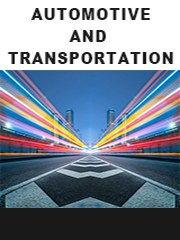Report overview
Automotive HVAC (HVAC is abbreviation for heating, ventilation and air conditioning systems) is a system consisting of three sub-systems that all work together to provide conditioned air to the cabin. The heating part can raise the temperature inside the car using heat from the engine. The ventilation part moves and directs the air within the cabin. And the air condition part can remove the heat from the car by cooling and dehumidifying the air with a refrigerant.
Automotive HVAC can make the drivers and passengers feel comfort and make driving pleasure, especially when the climate is harsh. The key components of a complete automotive HVAC system include heater core, thermostat, blower fan, HVAC controls, condenser, compressor and evaporator.
This report aims to provide a comprehensive presentation of the global market for Automotive HVAC, with both quantitative and qualitative analysis, to help readers develop business/growth strategies, assess the market competitive situation, analyze their position in the current marketplace, and make informed business decisions regarding Automotive HVAC. This report contains market size and forecasts of Automotive HVAC in global, including the following market information:
Global Automotive HVAC Market Revenue, 2018-2023, 2024-2029, ($ millions)
Global Automotive HVAC Market Sales, 2018-2023, 2024-2029, (K Units)
Global top five Automotive HVAC companies in 2022 (%)
The global Automotive HVAC market was valued at US$ 26520 million in 2022 and is projected to reach US$ 31700 million by 2029, at a CAGR of 2.6% during the forecast period. The influence of COVID-19 and the Russia-Ukraine War were considered while estimating market sizes.
In the market, the market concentration is relative high with the top 4 manufacturers (Denso, Hanon Systems, Valeo and MAHLE Behr) occupied market share more than 50%. These manufacturers have production plants around the world and supply products to automotive manufacturers around the world.
We surveyed the Automotive HVAC manufacturers, suppliers, distributors and industry experts on this industry, involving the sales, revenue, demand, price change, product type, recent development and plan, industry trends, drivers, challenges, obstacles, and potential risks.
Total Market by Segment:
Global Automotive HVAC Market, by Type, 2018-2023, 2024-2029 ($ Millions) & (K Units)
Global Automotive HVAC Market Segment Percentages, by Type, 2022 (%)
Manual HVAC
Automatic HVAC
Global Automotive HVAC Market, by Application, 2018-2023, 2024-2029 ($ Millions) & (K Units)
Global Automotive HVAC Market Segment Percentages, by Application, 2022 (%)
Passenger Vehicle
Commercial Vehicle
Global Automotive HVAC Market, By Region and Country, 2018-2023, 2024-2029 ($ Millions) & (K Units)
Global Automotive HVAC Market Segment Percentages, By Region and Country, 2022 (%)
North America
US
Canada
Mexico
Europe
Germany
France
U.K.
Italy
Russia
Nordic Countries
Benelux
Rest of Europe
Asia
China
Japan
South Korea
Southeast Asia
India
Rest of Asia
South America
Brazil
Argentina
Rest of South America
Middle East & Africa
Turkey
Israel
Saudi Arabia
UAE
Rest of Middle East & Africa
Competitor Analysis
The report also provides analysis of leading market participants including:
Key companies Automotive HVAC revenues in global market, 2018-2023 (Estimated), ($ millions)
Key companies Automotive HVAC revenues share in global market, 2022 (%)
Key companies Automotive HVAC sales in global market, 2018-2023 (Estimated), (K Units)
Key companies Automotive HVAC sales share in global market, 2022 (%)
Further, the report presents profiles of competitors in the market, key players include:
Denso
Hanon Systems
Valeo
MAHLE Behr
Sanden
Calsonic Kansei
SONGZ Automobile
Ebersp?cher
Xinhang Yuxin
Keihin
Gentherm
South Air International
Bergstrom
Xiezhong International
Shanghai Velle
Subros
Hubei Meibiao
Outline of Major Chapters:
Chapter 1: Introduces the definition of Automotive HVAC, market overview.
Chapter 2: Global Automotive HVAC market size in revenue and volume.
Chapter 3: Detailed analysis of Automotive HVAC manufacturers competitive landscape, price, sales and revenue market share, latest development plan, merger, and acquisition information, etc.
Chapter 4: Provides the analysis of various market segments by type, covering the market size and development potential of each market segment, to help readers find the blue ocean market in different market segments.
Chapter 5: Provides the analysis of various market segments by application, covering the market size and development potential of each market segment, to help readers find the blue ocean market in different downstream markets.
Chapter 6: Sales of Automotive HVAC in regional level and country level. It provides a quantitative analysis of the market size and development potential of each region and its main countries and introduces the market development, future development prospects, market space of each country in the world.
Chapter 7: Provides profiles of key players, introducing the basic situation of the main companies in the market in detail, including product sales, revenue, price, gross margin, product introduction, recent development, etc.
Chapter 8: Global Automotive HVAC capacity by region & country.
Chapter 9: Introduces the market dynamics, latest developments of the market, the driving factors and restrictive factors of the market, the challenges and risks faced by manufacturers in the industry, and the analysis of relevant policies in the industry.
Chapter 10: Analysis of industrial chain, including the upstream and downstream of the industry.
Chapter 11: The main points and conclusions of the report.
